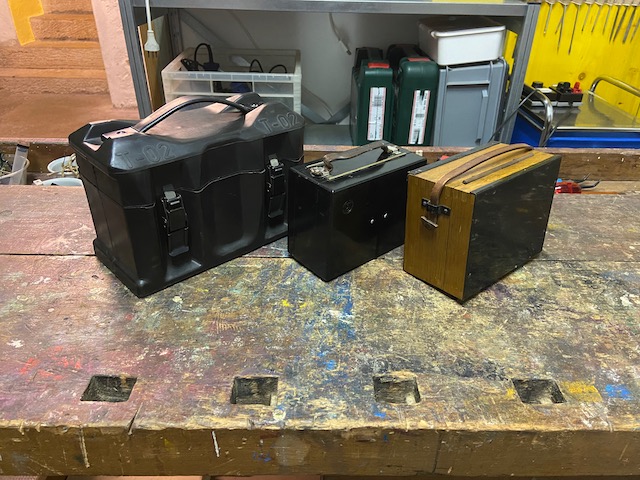
The Swiss Army Feldmess-Kästchen of the first generation is identical to the German Feldmesskästchen 18 [5] and was sourced initially from Germany (first imports probably in the late ~1920ies). The first generation Feldmess-Kästchen is first mentioned in the 1935 Swiss army signal corps journal [1]. The 2nd generation Feldmess-Kästchen is based on the same electrical setup, but uses a bigger and more precise instrument with parallax-mirror display and is built into a Suconit (a Swiss bakelite type made by Huber & Suhner) box. It was made by Trüb Täuber and is first mentioned in the respective regulations from 1954 [2]. The 1st and 2nd generation instrument were quiet delicate and not at all suitable for field use. The first generation wood box probably could take a little beating and the instrument was anyway not at all precise and more for rough estimates, but the 2nd generation in it's brittle Suconit box would probably break with the first drop. The 3rd generation instrument with name T-02 was then developed as a really field suitable heavy duty rugged instrument built into a rubber protected box, not completely water-proof but very weather-proof. That instrument was made by Camille Bauer probably from around 1975 onwards (first mentioned in the 1978 Swiss army signal corps journal [3]).
Regulations 58.121 [2] mention as use cases for the Feldmess-Kästchen:
The field measurement box, a combined volt/ohmmeter, enables: - DC voltage measurements up to 300 V. - Testing of field elements (control of internal resistance). - Measurement of direct current resistances up to 10kOhm, when using external power sources of sufficient voltage any higher resistances can be measured. Resistance measurements are mainly considered: - For checking and repairing devices. - For checking lines (insulation measurements). - For the control of earthing. - To determine the location of the fault on defective lines.
The instrument T-02 provides basically the same options for DC voltage up to 75V and DC resistance up to 1000MOhm [4]. DC resistance measurements in the 2kOhm range are based on the internal battery 6V, for the 1000MOhm range an internal DC/DC converter circuit provides an open circuit voltage of 260V.
From left to right: T-02 (1975), Feldmess-Kästchen Trüb-Täuber (1950), Feldmess-Kästchen (1930).

Ready to use with the provided measurement leads.
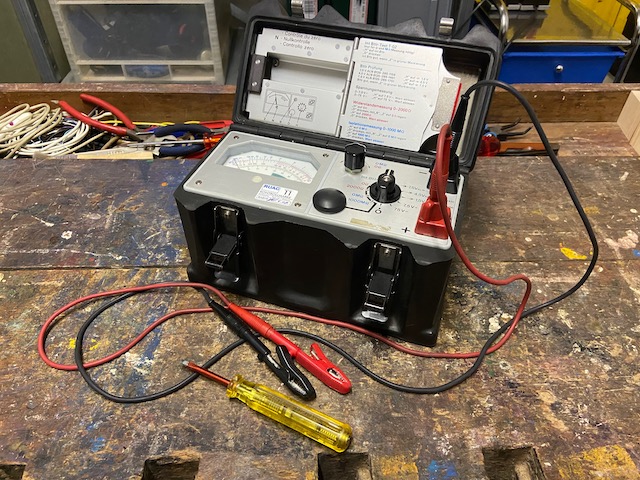

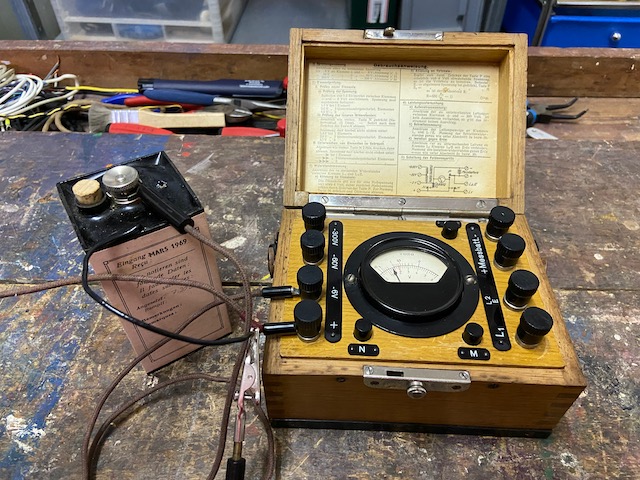
Only the 1950 model provides a parallax-mirror for precise readings.
All three models provide a battery indicator, for the 1975 model "green" is good, on the older two the lowest good reading for one, two or three elements are indicated by arrows (1950) or red lines (1930).
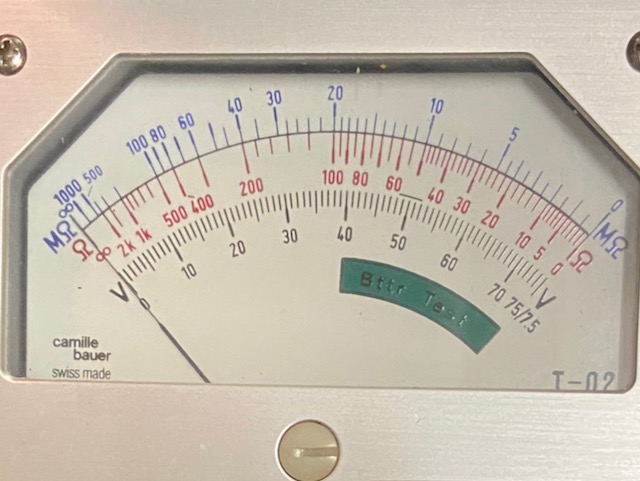


The 1950 and 1930 circuits are basically identical.
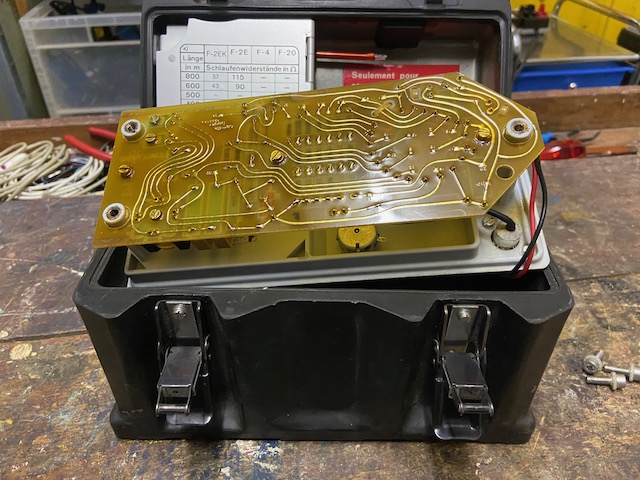
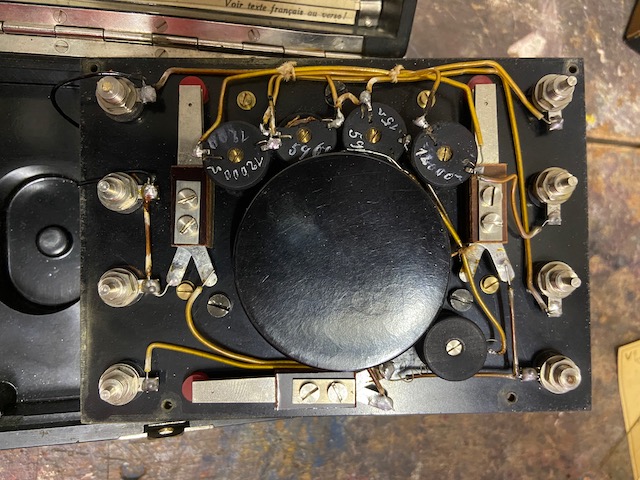
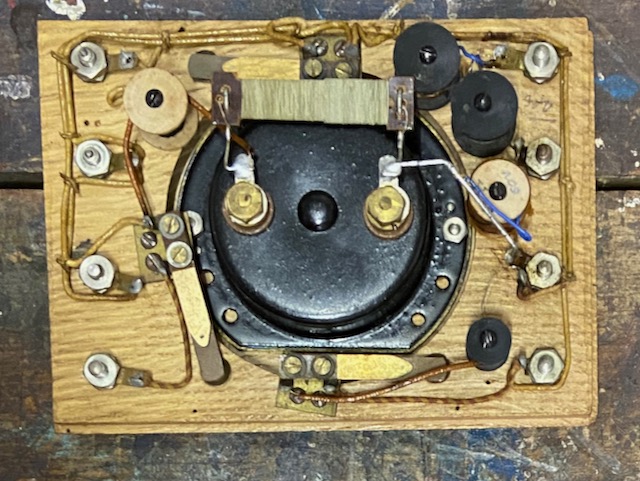
Battery compartment.
The 1950 version includes a resistance calc. table.
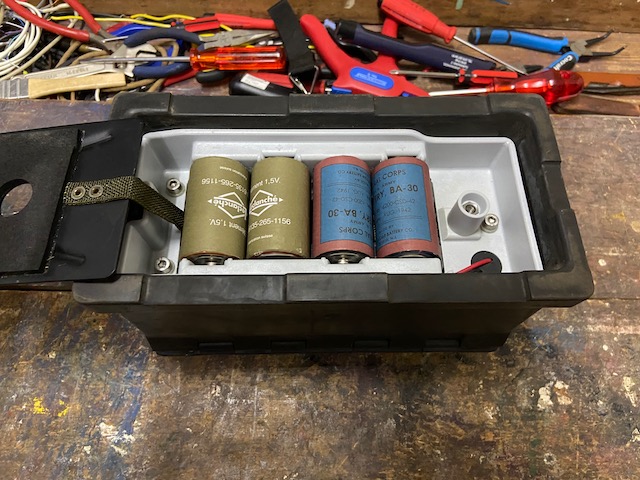

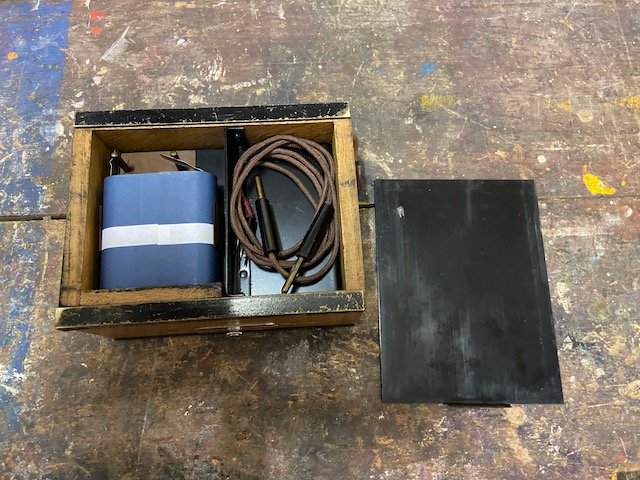
Diagram (only 1930 and 1950) and user guide.
The 1950 model user guide can be flipped for the French version, the 1975 user guide includes a French and Italian (see below).

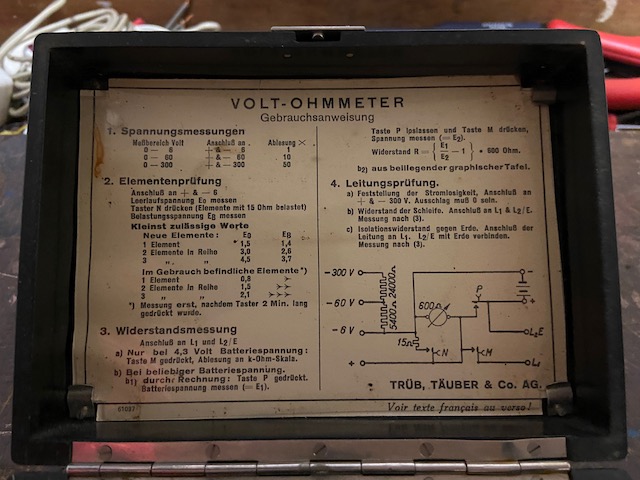

T-02 user guide in three languages plus Field cable resistance reference.

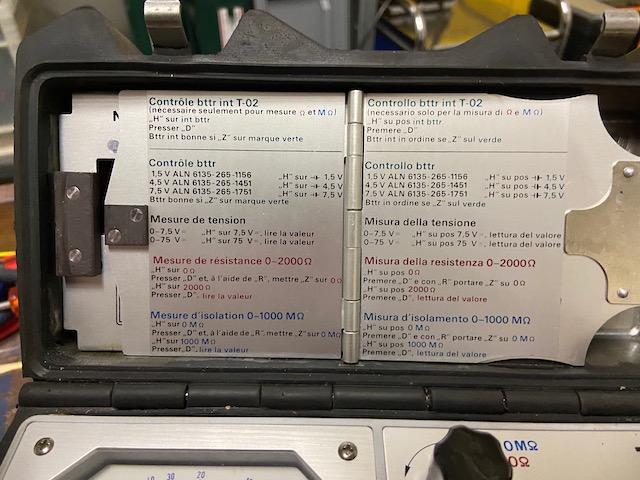
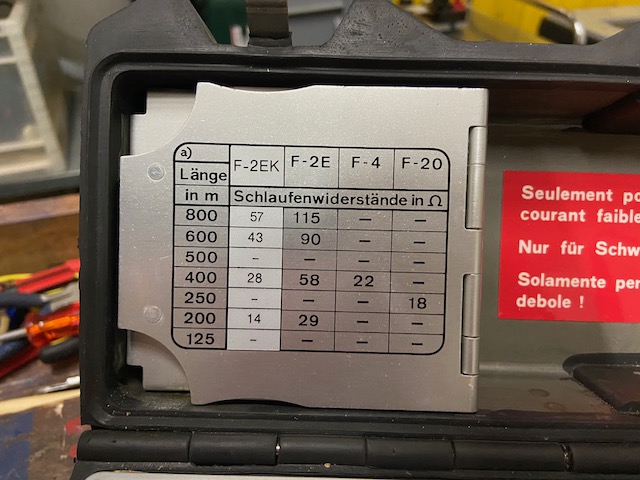
The 1930 guide and diagram has some peculiar problems.
The formula to calculate the measured resistance uses 550 instead of 600 Ohms, although the diagram shows the 600 Ohm moving coil instrument resistance and the instruments resistance is really 600Ohms.
The title 4 reads "Leistungsuntersuchung" (power measurements) instead of "Leitungsuntersuchung" (Line measurement), clearly a typo.

Creative Commons Attribution-ShareAlike 4.0 International License